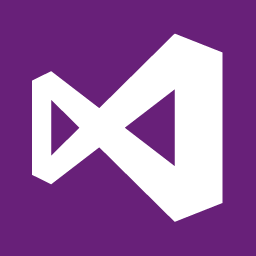The Art of Clean Code: Embracing Standards and Static Analysis in Python Development
September 7, 2024, 4:30 am

Location: United States, California, San Francisco
Employees: 1001-5000
Founded date: 2008
Total raised: $350M
In the world of programming, clarity is king. A well-structured codebase is like a well-organized library. It invites exploration and fosters collaboration. But what happens when different developers bring their unique styles to the table? The result can be a chaotic jumble, a patchwork quilt of inconsistencies. This is where coding standards and static analysis come into play.
Coding standards, particularly PEP 8 for Python, serve as a guiding light. They offer a roadmap for developers, ensuring that everyone is on the same page. Imagine a team of musicians playing a symphony. If each musician plays their own tune, the result is discord. But when they follow a shared score, harmony emerges. PEP 8 is that score for Python developers.
PEP 8 outlines essential rules for writing clean, readable code. It emphasizes the importance of consistent indentation, suggesting four spaces per indentation level. This simple guideline transforms a tangled mess into a clear structure. Just as a well-lit path guides travelers, proper indentation guides developers through the code.
Another critical aspect of PEP 8 is the maximum line length. Limiting lines to 79 characters prevents the code from sprawling out of control. Long lines can be like dense fog, obscuring the view. Breaking them into shorter segments enhances readability, allowing developers to navigate the code with ease.
Whitespace is another subtle yet powerful tool. PEP 8 advises leaving a single space around operators and after commas. This small detail can make a significant difference. It’s akin to the spacing between words in a sentence; too little, and the meaning becomes lost. Too much, and it becomes cluttered. Striking the right balance is key.
Naming conventions also play a vital role in code clarity. Descriptive names for variables and functions act as signposts, guiding developers through the logic of the code. A variable named `age` is far more informative than one named `a`. Clear names eliminate ambiguity, making the code self-documenting.
Comments are the breadcrumbs that lead others through the forest of your code. They should be concise and informative, explaining the "why" behind complex logic. However, comments should not state the obvious. A comment like “assigning a value” is unnecessary. Instead, focus on the reasoning behind decisions.
In addition to following coding standards, developers can leverage static analysis tools. These tools act like vigilant sentinels, scanning the code for potential issues before they become problems. Imagine a safety net beneath a tightrope walker. Static analysis catches errors early, preventing them from causing a fall.
Static analysis tools, such as linters, analyze code without executing it. They identify violations of coding standards and potential bugs. This proactive approach saves time and resources. Developers can address issues before they reach production, much like a mechanic inspecting a car before a long journey.
The mechanics of static analysis involve transforming code into an abstract representation, such as an abstract syntax tree (AST). This transformation allows the analysis tools to understand the structure and flow of the code. By identifying patterns associated with common errors, these tools can flag potential issues. It’s like having a seasoned mentor who points out pitfalls before you stumble into them.
However, static analysis is not without its challenges. False positives can occur, where the tool flags a non-issue as a problem. This can lead to frustration, much like a smoke alarm that goes off at the slightest hint of smoke. Developers can suppress these warnings with comments, but it’s essential to strike a balance. Too many suppressed warnings can create a false sense of security.
The integration of static analysis into development workflows can be seamless. Many IDEs support plugins that run static analysis in the background, providing real-time feedback. This immediate insight allows developers to correct issues as they code, fostering a culture of quality.
Moreover, the potential for integrating static analysis into package repositories is an exciting frontier. Imagine a world where libraries are automatically checked for vulnerabilities before publication. This proactive approach could significantly enhance the security of open-source projects. Developers would receive alerts for outdated dependencies, allowing them to address issues before they escalate.
As technology evolves, so too does the landscape of static analysis. The emergence of machine learning and neural networks presents new opportunities. While traditional methods remain effective, the integration of AI could enhance the accuracy and efficiency of static analysis tools. However, challenges remain. The dynamic nature of programming languages and the need for vast datasets complicate the implementation of AI-driven solutions.
In conclusion, the journey toward clean code is a continuous one. Embracing coding standards like PEP 8 and utilizing static analysis tools are essential steps. These practices not only improve code quality but also foster collaboration among developers. Clean code is not just about aesthetics; it’s about creating a foundation for sustainable development.
As developers, we must remain vigilant. Quality code is a reflection of our professionalism and attention to detail. By adhering to standards and leveraging the power of static analysis, we can create a codebase that is not only functional but also a joy to work with. So, let’s embrace these tools and practices, and pave the way for a brighter future in software development.
Coding standards, particularly PEP 8 for Python, serve as a guiding light. They offer a roadmap for developers, ensuring that everyone is on the same page. Imagine a team of musicians playing a symphony. If each musician plays their own tune, the result is discord. But when they follow a shared score, harmony emerges. PEP 8 is that score for Python developers.
PEP 8 outlines essential rules for writing clean, readable code. It emphasizes the importance of consistent indentation, suggesting four spaces per indentation level. This simple guideline transforms a tangled mess into a clear structure. Just as a well-lit path guides travelers, proper indentation guides developers through the code.
Another critical aspect of PEP 8 is the maximum line length. Limiting lines to 79 characters prevents the code from sprawling out of control. Long lines can be like dense fog, obscuring the view. Breaking them into shorter segments enhances readability, allowing developers to navigate the code with ease.
Whitespace is another subtle yet powerful tool. PEP 8 advises leaving a single space around operators and after commas. This small detail can make a significant difference. It’s akin to the spacing between words in a sentence; too little, and the meaning becomes lost. Too much, and it becomes cluttered. Striking the right balance is key.
Naming conventions also play a vital role in code clarity. Descriptive names for variables and functions act as signposts, guiding developers through the logic of the code. A variable named `age` is far more informative than one named `a`. Clear names eliminate ambiguity, making the code self-documenting.
Comments are the breadcrumbs that lead others through the forest of your code. They should be concise and informative, explaining the "why" behind complex logic. However, comments should not state the obvious. A comment like “assigning a value” is unnecessary. Instead, focus on the reasoning behind decisions.
In addition to following coding standards, developers can leverage static analysis tools. These tools act like vigilant sentinels, scanning the code for potential issues before they become problems. Imagine a safety net beneath a tightrope walker. Static analysis catches errors early, preventing them from causing a fall.
Static analysis tools, such as linters, analyze code without executing it. They identify violations of coding standards and potential bugs. This proactive approach saves time and resources. Developers can address issues before they reach production, much like a mechanic inspecting a car before a long journey.
The mechanics of static analysis involve transforming code into an abstract representation, such as an abstract syntax tree (AST). This transformation allows the analysis tools to understand the structure and flow of the code. By identifying patterns associated with common errors, these tools can flag potential issues. It’s like having a seasoned mentor who points out pitfalls before you stumble into them.
However, static analysis is not without its challenges. False positives can occur, where the tool flags a non-issue as a problem. This can lead to frustration, much like a smoke alarm that goes off at the slightest hint of smoke. Developers can suppress these warnings with comments, but it’s essential to strike a balance. Too many suppressed warnings can create a false sense of security.
The integration of static analysis into development workflows can be seamless. Many IDEs support plugins that run static analysis in the background, providing real-time feedback. This immediate insight allows developers to correct issues as they code, fostering a culture of quality.
Moreover, the potential for integrating static analysis into package repositories is an exciting frontier. Imagine a world where libraries are automatically checked for vulnerabilities before publication. This proactive approach could significantly enhance the security of open-source projects. Developers would receive alerts for outdated dependencies, allowing them to address issues before they escalate.
As technology evolves, so too does the landscape of static analysis. The emergence of machine learning and neural networks presents new opportunities. While traditional methods remain effective, the integration of AI could enhance the accuracy and efficiency of static analysis tools. However, challenges remain. The dynamic nature of programming languages and the need for vast datasets complicate the implementation of AI-driven solutions.
In conclusion, the journey toward clean code is a continuous one. Embracing coding standards like PEP 8 and utilizing static analysis tools are essential steps. These practices not only improve code quality but also foster collaboration among developers. Clean code is not just about aesthetics; it’s about creating a foundation for sustainable development.
As developers, we must remain vigilant. Quality code is a reflection of our professionalism and attention to detail. By adhering to standards and leveraging the power of static analysis, we can create a codebase that is not only functional but also a joy to work with. So, let’s embrace these tools and practices, and pave the way for a brighter future in software development.

